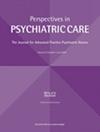急诊手术患者住院恐惧量表波斯语版的心理测量特性
IF 1.9
4区 医学
Q2 NURSING
引用次数: 0
摘要
目的。本研究旨在描述波斯语版住院恐惧量表(P-FHS)的心理测量特性。设计和方法。为了评估翻译量表的效度和信度,采用了横断面设计。10位专家对住院恐惧量表(FHS)回译为波斯语后的内容效度进行了评估。采用探索性因素分析(EFA)和验证性因素分析(CFA)对612例急诊手术患者进行结构效度评估。采用STROBE检查表进行横断面研究。发现。EFA (n = 306)结果显示,住院恐惧有三个因素。这三个因素占总方差的45.28%。采用CFA (n = 306)进行验证(近似均方根误差=(90%置信区间)= 0.050(0.041,0.058),拟合优度指数= 0.945,比较拟合指数= 0.968,非正态拟合指数= 0.948,增量拟合指数= 0.968,Tucker-Lewis指数= 0.959)。三个因子的Cronbach’s alpha、McDonald’s omega、复合信度和最大信度系数均大于0.7,具有较好的内部一致性。实践的含义。根据已发表的结果,P-FHS在测量急诊手术患者住院焦虑方面是有效的。建议伊朗文化中的护士使用合法和值得信赖的技术来查明急诊手术患者住院焦虑的原因,以提供最佳护理。本文章由计算机程序翻译,如有差异,请以英文原文为准。
Psychometric Properties of the Persian Version of Fear of Hospitalization Scale in Patients Undergoing Emergency Surgery
Purpose. This study was designed to characterize the psychometric properties of the Persian version of Fear of Hospitalization Scale (P-FHS). Design and Methods. In order to evaluate the validity and reliability of the translated scale, a cross-sectional design was employed. Ten experts evaluated the content validity of Fear of Hospitalization Scale (FHS) after it had been back-translated into Persian. With 612 patients having emergency surgery, construct validity was assessed using exploratory factor analysis (EFA) and confirmatory factor analysis (CFA). The STROBE checklist for cross-sectional studies was followed. Findings. The results of EFA (n = 306) showed that fear of hospitalization had three factors. These three factors accounted for 45.28% of the total variance. Also, these factors were confirmed by CFA (n = 306) (root-mean-square error of approximation = (90% confidence interval) = 0.050 (0.041, 0.058), goodness-of-fit index = 0.945, comparative fit index = 0.968, non-normal fit index = 0.948, incremental fit index = 0.968, Tucker–Lewis index = 0.959). The coefficients of Cronbach’s alpha, McDonald’s omega, composite reliability, and maximum reliability for all three factors were greater than 0.7, demonstrating satisfied internal consistency. Practice Implication. According to the published results, the P-FHS is effective at measuring hospitalization anxiety in patients undergoing emergency surgery. It is advised that nurses in Iranian culture use a legitimate and trustworthy technique to pinpoint the causes of hospitalization anxiety in patients undergoing emergency surgery to give optimal care.
求助全文
通过发布文献求助,成功后即可免费获取论文全文。
去求助
来源期刊
CiteScore
5.00
自引率
4.30%
发文量
139
审稿时长
>12 weeks
期刊介绍:
Perspectives in Psychiatric Care (PPC) is recognized and respected as THE journal for advanced practice psychiatric nurses. The journal provides advanced practice nurses with current research, clinical application, and knowledge about psychiatric nursing, prescriptive treatment, and education. It publishes peer-reviewed papers that reflect clinical practice issues, psychobiological information, and integrative perspectives that are evidence-based. Perspectives in Psychiatric Care includes regular columns on the biology of mental illness and pharmacology, the art of prescribing, integrative perspectives, and private practice issues.

 求助内容:
求助内容: 应助结果提醒方式:
应助结果提醒方式:


